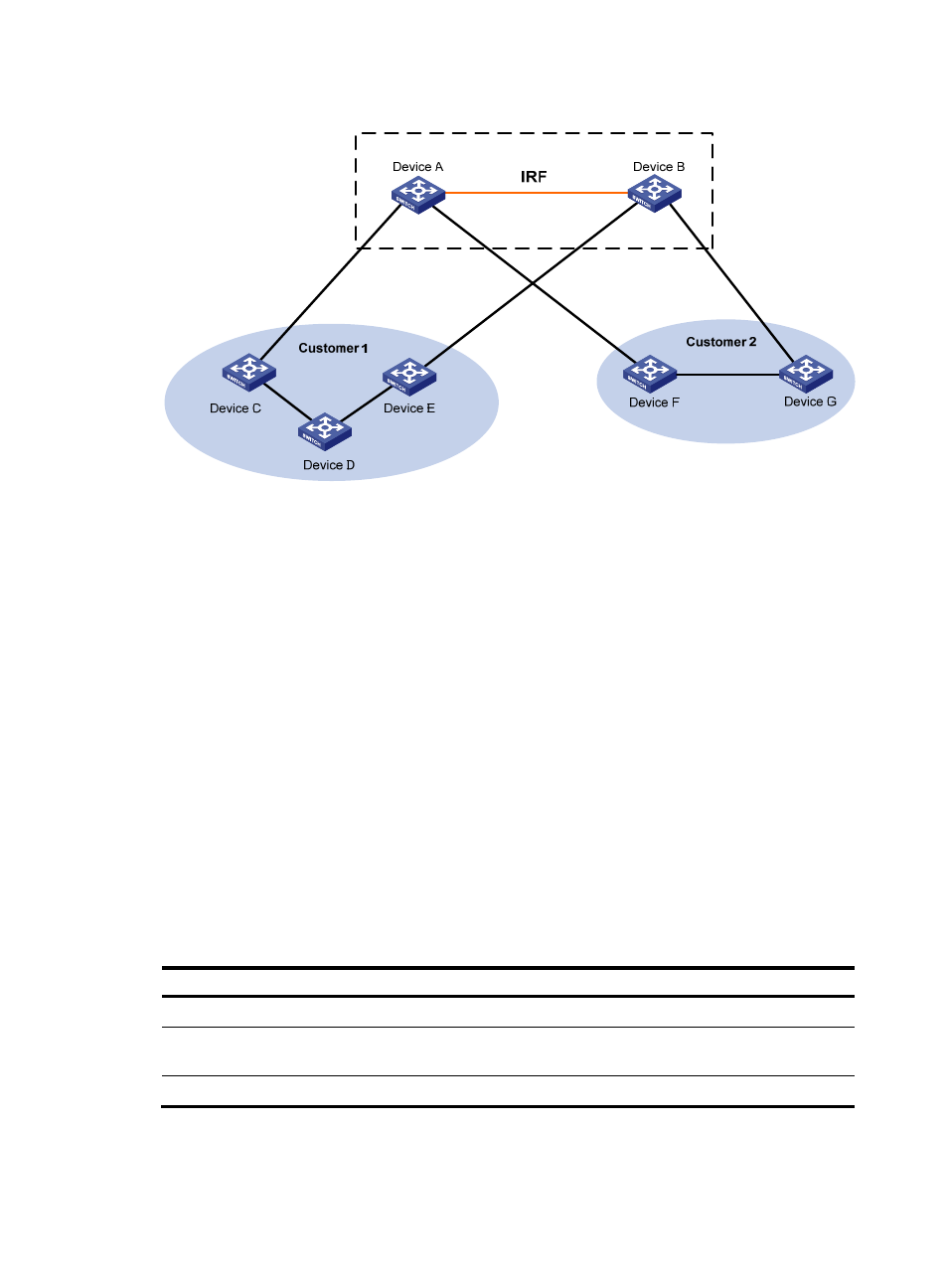Configuration restrictions and guidelines, Configuration procedure, Figure 28 – H3C Technologies H3C S12500 Series Switches User Manual
Page 106

93
Figure 28 TC snooping application scenario
In the network, the IRF fabric transparently transmits the received STP BPDUs and does not participate in
STP calculations. When a topology change occurs to the IRF fabric or attached access-layer networks,
the IRF fabric might need a long time to learn the correct MAC address table entries and ARP entries,
resulting in long network disruption. To avoid the network disruption, you can enable TC snooping on the
IRF fabric.
TC snooping enables the device to actively clear the MAC address table entries and ARP entries upon
receiving TC-BPDUs and to re-learn the MAC address table entries and ARP entries, so that the device
can correctly forward the user traffic.
Configuration restrictions and guidelines
•
TC snooping and the spanning tree feature are mutually exclusive. Globally disable the spanning
tree feature before you enable TC snooping.
•
TC snooping is ineffective on the ports on which BPDU tunneling is enabled for STP. For more
information about BPDU tunneling, see "Configuring BPDU tunneling."
Configuration procedure
To configure TC snooping:
Step Command
Description
1.
Enter system view.
system-view
N/A
2.
Globally disable the
spanning tree feature. undo stp enable
By default, the spanning tree feature is enabled
globally.
3.
Enable TC snooping.
stp tc-snooping
By default, TC snooping is disabled.
